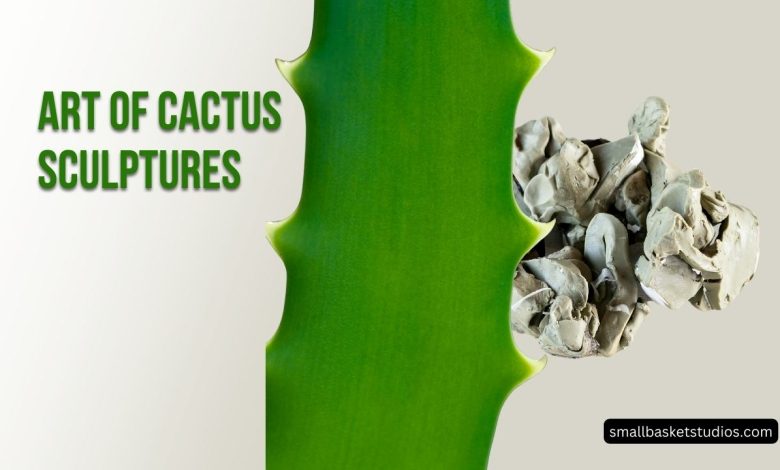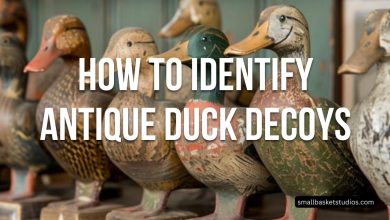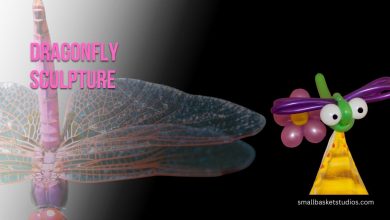The Art of Cactus Sculptures

Cacti bring images of the rugged, inhospitable desert, yet within these hardy succulents lies intricate beauty waiting to be uncovered. Cactus sculpture is the art of shaping live cacti into stunning designs that reveal the overlooked elegance of these dry-climate plants. This unique art form brings a lush, green vibrancy to otherwise stark and barren landscapes.
What is Cactus Sculptures?
Cactus sculpture involves carefully guiding the growth of a live cactus by pruning and training it onto a shaped frame. With care and patience, striking silhouettes emerge over months and years. These living artworks not only transform spaces but also challenge perceptions by unveiling the grace in prickly cacti. As xeriscaping and drought-tolerant landscaping grow in popularity, especially in hot and arid regions, cactus sculpture offers a novel way to incorporate art and sustainable plants to enhance outdoor living areas.
A Brief History of Cactus Sculpture
While likely emerging through individual experimentation, cactus sculpture as an established art form traces back to the 1930s in the southwest United States. Artists discovered they could guide and contain the growth of opuntia cacti into writhing, twisting shapes by pruning and securing the succulents to wire frames. The natural inclination of opuntia cacti to grow bushy pads of segments lent well to this inventive artform.
Cactus sculptures surged in popularity through the 1940s and 1950s as residents in Arizona and California transformed both public and private spaces with this iconic desert garden art. Roadside novelty architecture, especially diners shaped like their signature dishes or giant animals, also incorporated cactus sculptures into their eye-catching designs.
The art form saw resurgence in the 1990s and early 2000s. Innovations in frames and knowledge of optimal cactus species for sculpting expanded, as did appreciation for the unique medium. Today cactus sculpture, especially for home and commercial landscaping, thrives thanks to interest in xeriscaping along with admiration of the quirky art pieces.
Why Choose Cactus Sculpture? Cactus sculpture offers ecological and aesthetic benefits for spaces, especially in hot, arid climates. As interest grows in sustainable landscaping, these creative succulent artworks present unique advantages:
Sustainable & Low Maintenance
All cacti thrive in warm environments with little water. Once established, cactus sculptures need only occasional trimming and basic care for healthy growth. The succulents stay green and vibrant even in sweltering heat, providing lush accents that withstand desert conditions.
Uniquely Beautiful
Cactus sculptures reveal unexpected elegance within the rugged succulents. They provide unusual statement pieces that inspire curiosity and wonder with their improbable twists and trails of tender cactus pads. The living artworks change slowly over seasons, offering enduring intrigue.
Enhance XeriscapedSpaces
Xeriscaping utilizes drought-resistant plants such as cacti and succulents to create attractive, low-water landscapes. Cactus sculptures perfectly complement the goals of xeriscaping by adding vibrant interest without taxing water supplies. They accent and elevate spaces dedicated to conserving water.
Support Pollinators
The flowers of many sculpted cacti varieties supply nectar or pollen for bees, butterflies, hummingbirds and other regional pollinators. Cactus sculptures not only beautify landscapes but also support healthy local ecosystems through the pollination services only cacti provide in desert environments.
Add Distinctive Regional Character
Cactus sculptures celebrate and showcase the iconic desert landscapes of the southwest United States. For commercial spaces they bring regional authenticity, while residents embrace the cactus art as a emblem of the striking naturescapes surrounding them.
Popular Types of Cactus for Sculpting
While most cacti varieties can be used to create sculptures, certain species prove most suitable for training into ornate shapes. Typically segmented cacti work best, as they grow pads that can be guided into curves along frames. Columnar cacti also make compelling sculptures. Some top choices include:
Prickly Pear
One of the most classic cacti for sculpting, prickly pear cacti (opuntia species) easily adhere to structures while growing. Their trademark rounded pads sprout readily even from small, attached segments. With ample new growth to work with, prickly pear cacti can assume nearly any form. They also flower prolifically.
Cholla
Commonly called tree or cane cactus, these branching columnar cacti work beautifully for sculpture. Cholla (Cylindropuntia species) grow bushy crowns ideal for training along vertical frames. Some unusual species such as C. bigelovii feature shaggy golden spines that cascade dramatically down sculpted forms.
Organ Pipe
A large columnar variety that grows abundantly in stands, organ pipe cactus (Stenocereus thurberi) adapts well to sculpture frames for a bold vertical element. Its angled, fluted shape makes it one of the most ornamental choices. Organ pipe cactus also grows quite tall if left unpruned.
Torch
Torch cactus (Echinopsis species, Trichocereus species) offers commanding heights and strong silhouettes for stunning cactus sculptures. These fast-growing columns can reach over 10 feet, with some varieties growing up to 40 feet tall under ideal conditions. Torch cactus spines lend striking textures as well.
How to Create Cactus Sculptures
Cactus sculpture relies on guiding cactus growth along fixed frame structures. While relatively simple in concept, perfecting the art requires patience along with best practices for cactus health and flexible growth. Here’s an overview of how to create cactus sculptures:
- Plan and Construct Frame First, map out the desired shape for the sculpture, keeping cactus growth habits in mind. Create a sturdy frame from materials such as rebar that can support considerable weight without shifting. Secure to the ground.
- Add Cactus Pad Segments Trim pads or segments from a parent cactus. Allow cuts to callous before attaching to the frame. Use flexible wire to secure segments to frame. Cluster multiple segments close together to start.
- Allow New Growth & Guide Along Frame Keep cactus scaffold moist until established. As segments grow and extend, gently guide new pads to drape and wind along the frame. Trim excess growth as needed for shaping.
- Ongoing Maintenance Monitor moisture and nutrient levels in the root zone. Trim wayward or excess growth biannually. In roughly 2-3 years, the sculpture will achieve the intended silhouette. Some periodic shaping will always be needed.
Key Factors for Success
Several best practices help ensure happy, flexible cactus growth that conforms nicely to sculpture frames:
- Site in full sun
- Well-draining soil mix
- Moderate fertilization
- Consistent moisture while rooting
- Protect from frost
- Allow 12-24 months to establish
Troubleshooting Issues
- Over or under watering – Adjust irrigation practices
- Spindly, weak growth – Increase sunlight, add fertilizer
- Slow growth – Apply more frequent watering for first 2 years
- Pad drying or drop off – Increase humidity, mist pads
- Misshapen pads – Trim errant sections guide growth
Cactus Sculpting in Landscape Design & Beyond
Once found mostly in novelty roadside architecture, oversized plazas or personal gardens, cactus sculpture now also integrates into luxury resorts, boutique hotels, office parks and high-end residential landscape design. The whimsical artworks make sustainable accents that brand spaces as quintessentially Southwestern. Commercial plant nurseries also sell framed cube- and ring-shaped mini living sculptures as decorative xeriscape statements.
Public spaces embrace cactus sculptures on large scales to reconnect communities to regional ecosystems and environments. Major civic sculptures, such as Phoenix’s iconic giant lumina cactuses, aim to inspire contemplation about human relationships with nature. Other areas designate Cactus Sculpture Parks that showcase extensive collections by local artists. These installations provide relaxing green spaces while celebrating the Sonoran Desert.
Whether quirky roadside oddities, fanciful garden accents, or monumental conceptual art installations, cactus sculptures reveal new possibilities with hardy desert plants. They transform perception of inhospitable cacti into admiration for their unexpected elegance and beauty. With care and vision, cactus sculptures breathe vitality and wonder into stark southwestern landscapes.
Frequently Asked Questions About Cactus Sculptures
How long does it take for a cactus sculpture to form?
Depending on size, cactus sculptures generally take 2 to 3 years to assume their overall silhouette. However, frames often remain in place indefinitely to guide ongoing growth and preserve the intended shape.
What’s the best cactus for sculpting?
Prickly pear and cholla cacti work especially well for sculpting. Prickly pear readily forms new segments for adhering and draping along frames. Cholla branches stay flexible even as they age, allowing shaping.
Do cactus sculptures need much maintenance?
Cactus sculptures need basic care such as occasional watering, fertilizing, and pruning stray growth. Most varieties thrive even in droughts if established. Minimal maintenance is one benefit for sculpted xeriscape.
How big will a cactus sculpture ultimately grow?
Growth depends on species and growing conditions. Prickly pear and cholla typically reach under 8 feet tall. Columnar types like organ pipe and torch can grow to 40 feet if unpruned. Size can be controlled through trimming.
Should I create my own cactus sculpture or buy one?
Both options work. For the satisfaction of guiding your own creation, start with a simple wire frame and prickly pear segments. Pre-shaped frames with established sculptures attach to a wall or posts for instant garden art.
Can cactus sculptures grow indoors?
Yes. Ensure strong light through ample sunny windows and grow lights if needed. Indoor sculptures stay much smaller than outdoor pieces so regular trimming helps maintain proportions. Use well-draining soil and pots with drainage holes.
Metamorphosis of the Overlooked: Finding Beauty in Cactus Sculpture
Cactus sculptures reveal overlooked elegance within hardy desert dwellers by coaxing graceful contours from rugged succulents. With care and vision, the potential emerges for slumbering beauty even in the most unforgiving environments. What other overlooked treasures offer possibilities for transformation through appreciation?




